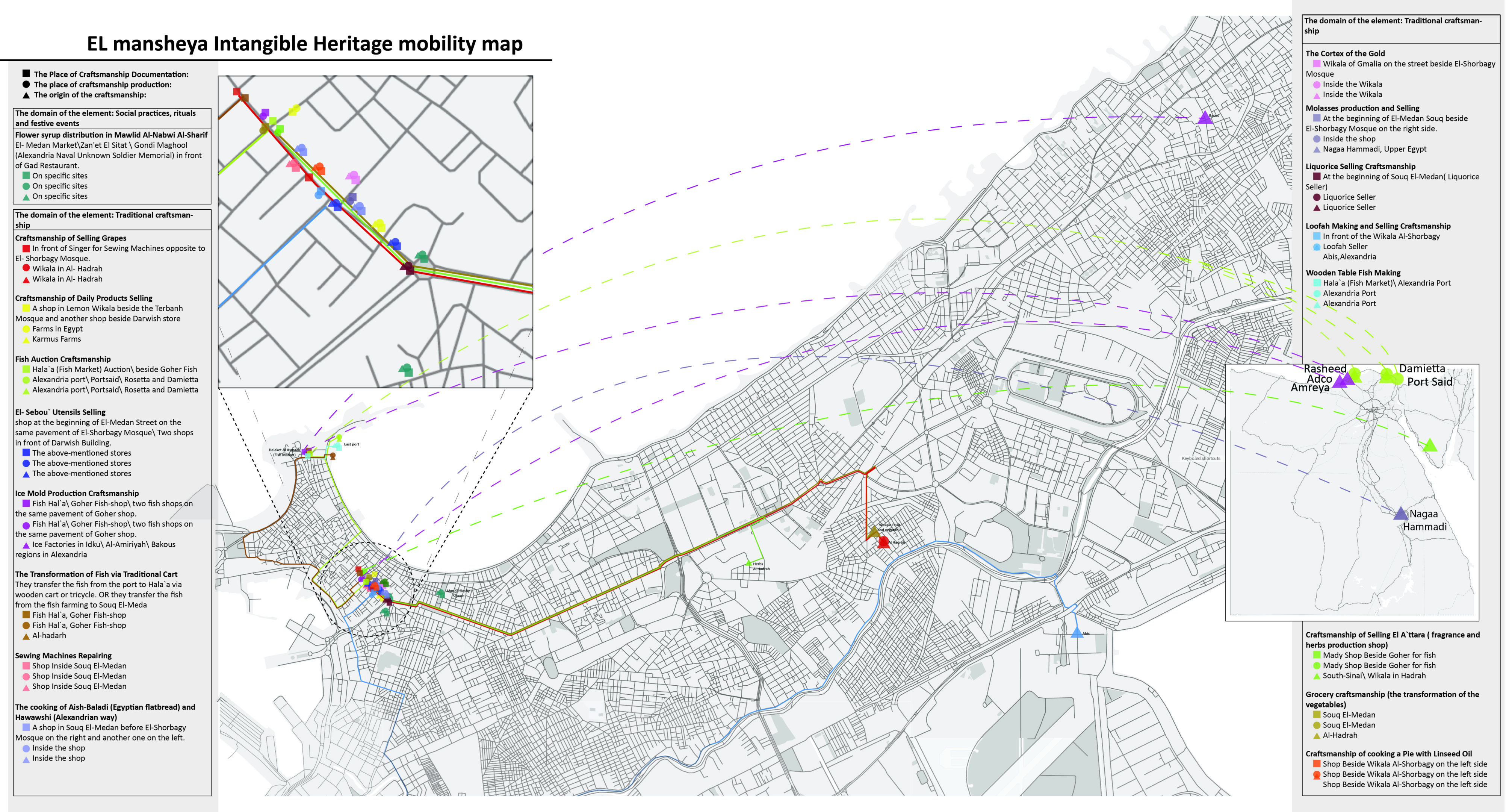Fish Markets Heritage in Alexandria
Documenting the Heritage of Fish Markets in Alexandria


Introduction:
Documenting the cultural heritage of Alexandria is a key factor in preserving and safeguarding its Heritage. Alexandria has a diverse tangible and intangible cultural heritage
elements and values, and the most important feature of this heritage is that it is still revived and used until now, in addition to it is important source for the city scientifically, technically and economically. Therefore, it is necessary to document and safeguard the heritage from extinction for future generations. However, Alexandria suffers from lack of the efforts that should be made to document its heritage, whether tangible or intangible. Hence the idea of the project of the “(Documentation and urgent safeguarding of the heritage of the fish markets in Alexandria, from El-Halaqa Market and El-Medan market”, which aims to solve the problems of documenting and urgent safeguarding of them, and that was before the demolition of those markets, especially El-Halaqa market.
The project comes within the projects of the Raquda Foundation for Art and Heritage NGO-NPO, which began in 2015 with the aim of preservation, conservation and documentation the tangible and intangible Cultural Heritage, along with EES scholars.
Why the heritage of El-Medan Market and the fish Market?
The history of this region began from the Greco-Roman era, the traces and landmarks of those two eras are still present, even if they are on a small scale. Then the Islamic eras came with an important architectural and commercial activities, which affected the history of the region until now as living heritage. Some of these architectural monuments are rare in the whole Egypt specially the style of building the Wakalah “agency” with mosque in the Ottoman era. Then modern era started since Muhammad Ali came. When Muhammad Ali came to rule Egypt, he took care of the city of Alexandria, especially its eastern and western harbours, to establish a strong economy for Egypt, so he opened Alexandria to international communities and consuls to be Egypt’s gateway. Hence, urban planning for the city of Alexandria had been changed with systematic methods, and this affect the heritage architecture of the two regions.

Goal and mission
Therefore, this project aims to document the two markets, draw completed map through GIS for their tangible and intangible heritage, document the mobility
and sales processes inside them, and implement architectural documentation for the two markets. Then interpret all of documented elements in a photography
exhibition about the two markets, a catalogue will be printed for those markets, and a documentary movie will be filmed and directed to be shown in
different cultural centres, in addition to a full map of the two markets and their mobility.
Methodology
The methodology of the project is divided into 5 sections; The first section is the academic which is concerned with academic research and academic writing for all
references, sources, books, manuscripts, travellers’ books which wrote and mentioned the targeted points. the second section is surveying by designed inventories of the tangible and intangible heritage of the two markets; the ICH inventory operations are carried out by the community and they are classified into categories (workers – specialists – researchers) and the inventory forms are documented in writing and photographed, the tangible heritage inventory is carried out by archives of the buildings through governmental entities archives and public libraries. The third section is the mentoring and mapping which will be carried on by using GIS. The fourth section is filmmaking and photographic documentation of each point will be documented. The fifth section that the whole final photos and the map will be displayed in exhibition and in a dedicated catalogue and this catalogue will be dis tributed to different practical libraries in Egypt and then they will be showed virtually on Raquda Foundation website.




The intangible cultural heritage, with its different elements, is the main evidence that the communities are interacting with their surrounding environment to meet their daily life needs. As a result, it is regarded as a practice that generations pass it down through the various eras to today, with each generation’s impact on this heritage in order to cope with the updates and upgrades of its needs. When we mention the word “market,” the revival audio scenes are formed and heard in our minds; you can listen to human, animal, and tool voices. The location of the markets is formed by humans in proximity to one of the most important natural elements, which is the sea or the river, in addition to its location near their homes and religious buildings. One of the best aspects of El-Medan Souq and El-Hala’a in Anfushi is their proximity to the eastern and western ports; you can also think of those markets as a connection point between the two ports. Thus, the markets are attracted to many forms of cultural and heritage craftsmanship, oral traditions and expressions, and performing arts that reflect Alexandrian needs, especially in food and drink, in addition to their worship of the deeply mystical and their obsession with mystics. The Intangible Heritage domains are:
● Oral traditions and expressions, including language as a vehicle of the intangible cultural heritage;
● Social practices, rituals and festive events;
● Knowledge and practices concerning nature and the universe;





